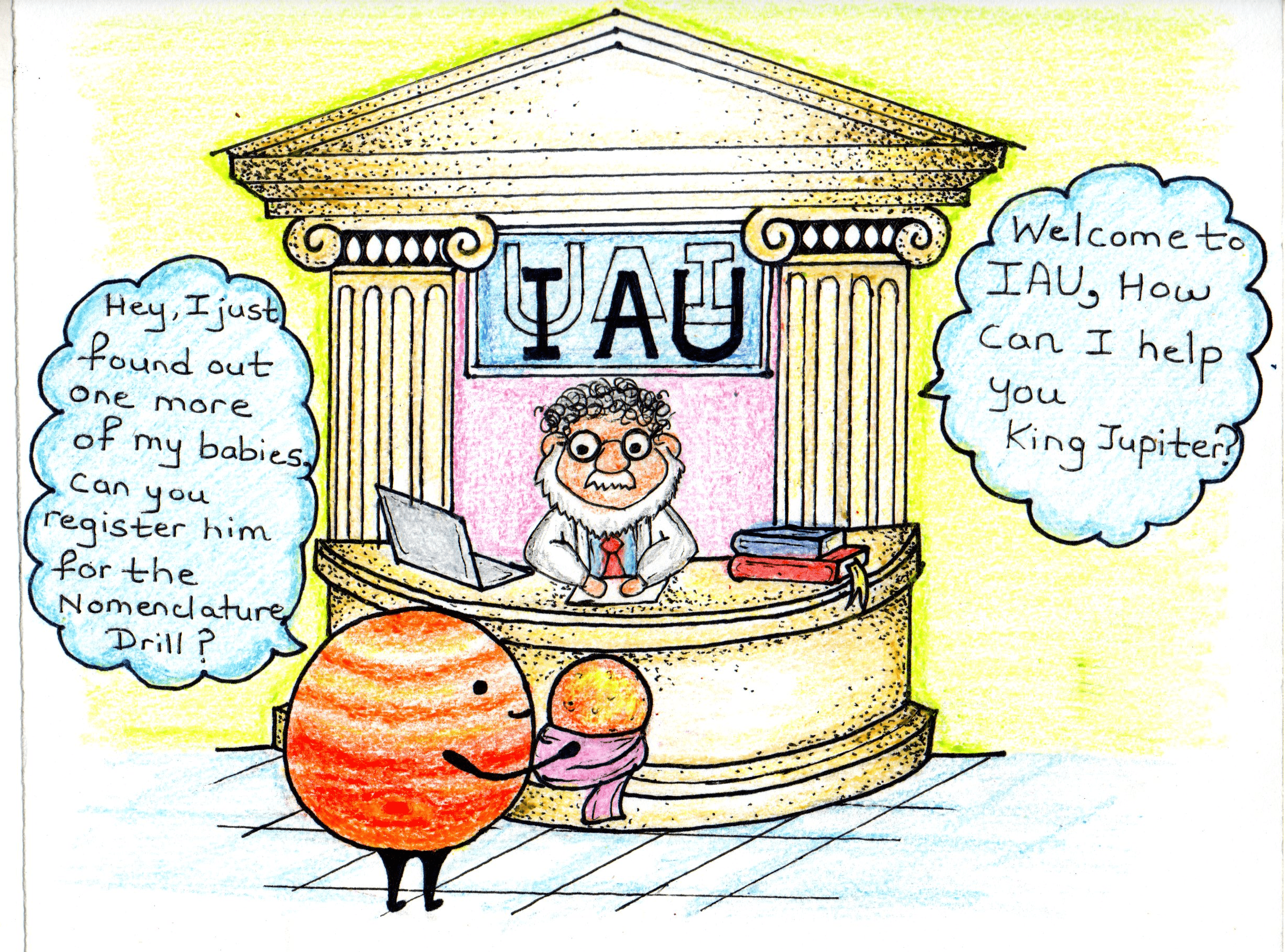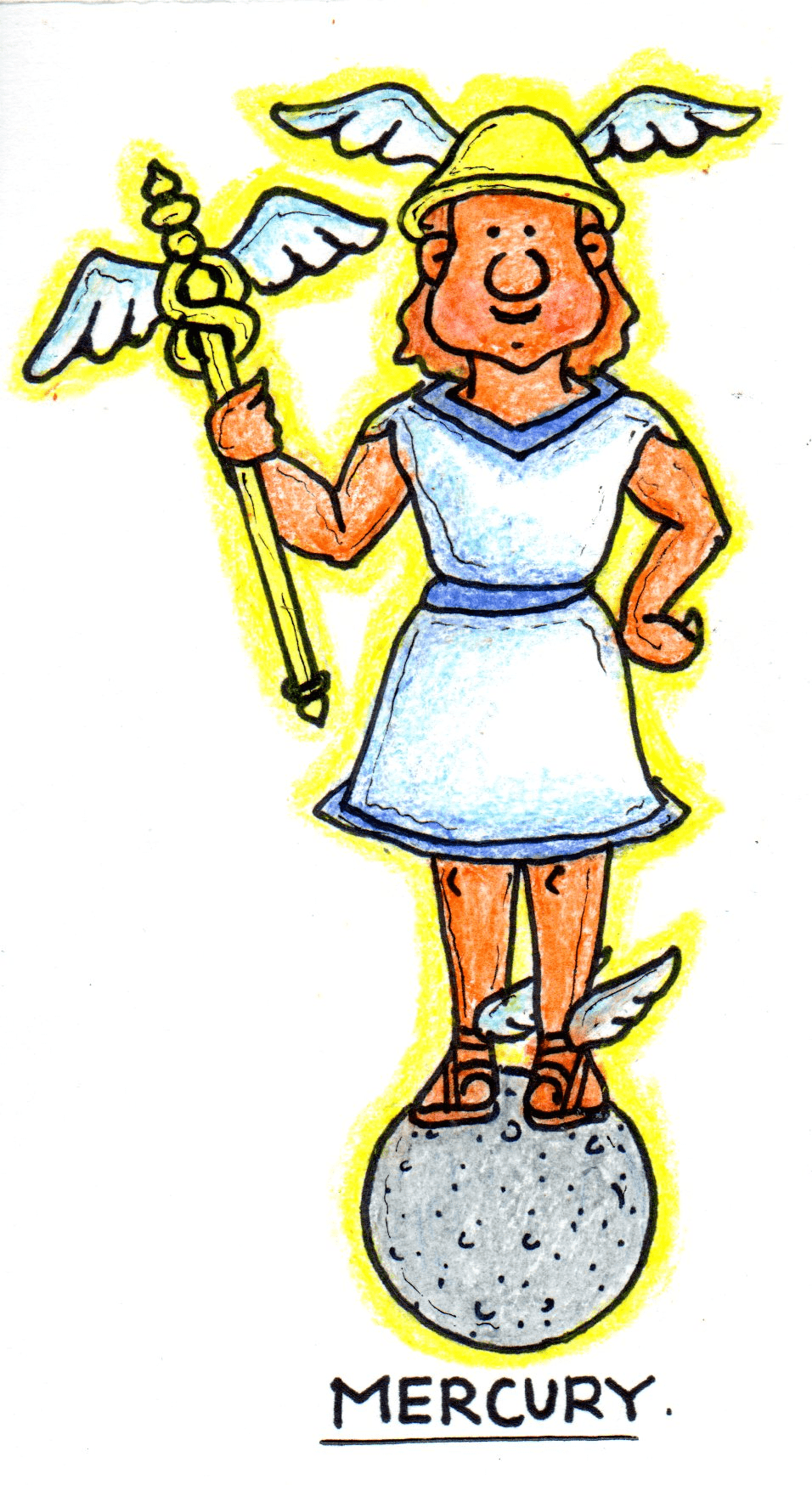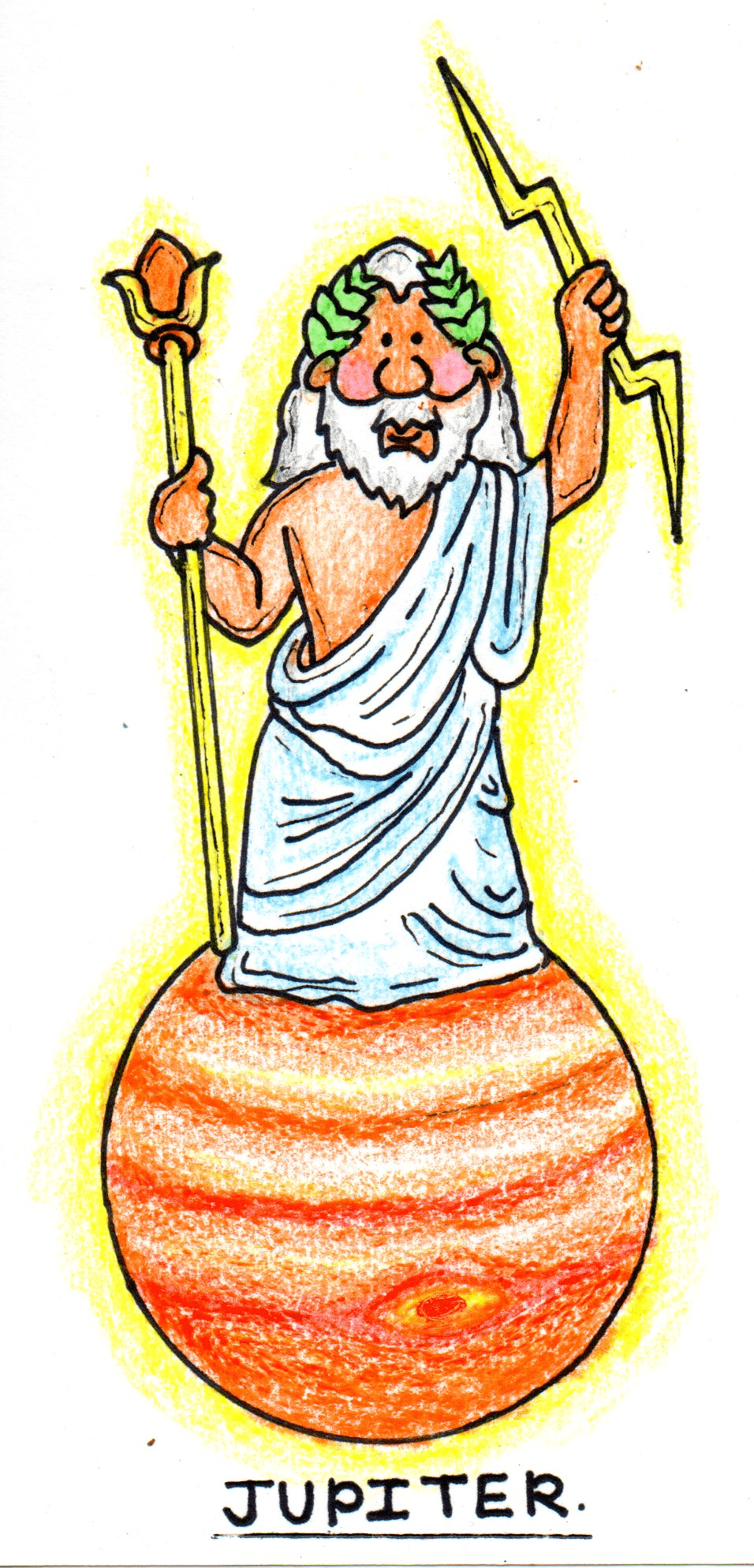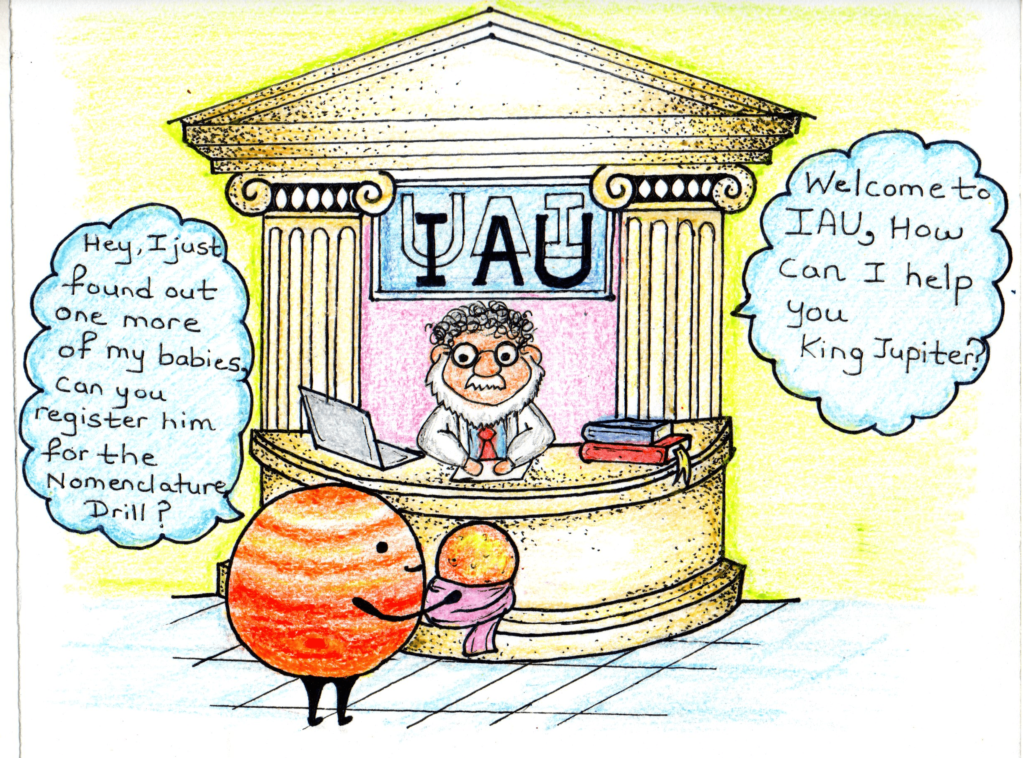“The beginning of wisdom is to call things by their right names”
The previous edition had been a knowledge tree for the seekers of the under-rated gem of all sciences-TAXONOMY! Here’s something a little offbeat yet interesting enough to grab everyone’s attention.
As Wendy Carroll has rightfully stated: “It’s all in the name.” So keeping up with talk of the town, brace yourselves to unleash the science of naming celestial bodies. International Astronomical Union (IAU) was established in 1919 to sort out the major glitches in the emerging world of cosmic discoveries, one of which was naming the celestial bodies as they came in on research-conveyor.
Before the arbitration by IAU, local names of planets and their moons were popular. But with IAU, a set of well-defined rules were laid down which were acceptable throughout the world.

Planetary nomenclature is governed by the following procedures and rules for easy location, discussion, and description:
- When a planet/satellite is first spotted, a provisional name is allotted for the time being. The associated IAU task force proposes the main features of the newly discovered body.
- Higher resolution images and maps unveil the further important and specific surface features, mostly geological.
- At this point, names can be suggested to the task force, which may or may not be accepted.
- Names are reviewed and submitted by the task force Chairman to the Working Group for Planetary System Nomenclature (WGPSN ).
- After a successful review and voting among members of WGPSN, the selected name is approved as the official IAU nomenclature for that celestial body.
- The approved name is immediately updated in the Gazetteer of Planetary Nomenclature. The same is used in maps and in publications.
- Any objections raised against the finalised nomenclature based on substantive problems or inconsistent application of normal IAU naming convention are forwarded in writing or via email to the General Secretary of IAU.
- Objections, however, must be raised within 3 months of the official nomenclature.
Note: If the object has been discovered by any ordinary citizen, then discoverer’s opinion plays an active part in the nomenclature.
The International Astronomical Union recognises Astronomy as an ancient science and a lot of the names derive their inspiration from the same time and place. The eight planets of our solar system already had popular names before the inception of IAU. They were named after the Roman gods like many other initially discovered cosmic objects. So, the IAU decided to adopt that tradition as a part of its nomenclature guide.
Talking of the brainwave that helped us name our beloved 8 planets and a few of their satellites, let’s find out the reasons and sagas behind their name:
1. Mercury
It was named after the Roman god of commerce and travel. The planet probably earned this name since it appears to move quite swiftly.

2. Venus
Venus is the name of the Roman goddess of love and beauty. The planet absolutely justifies its name by being brightest of them all and providing a worthwhile view.
3. Earth
Earth is the only planet in our solar system that did not derive its name from characters in Greek/Roman mythology. The name possesses an Indo-European base (Anglo-Saxon), where the word ‘erda’ means ‘ground/soil’. Earth’s satellite, as called MOON, is also an Anglo-Saxon derivation. However, different civilizations had their own nomenclatures pertaining to it.
4. Mars
It was named after the Roman god of war for its red, bloodlike appearance. Its two satellites are Phobos (named after a horse that drew Mars’ chariot) and Deimos (named after one of Mars’ friend). Phobos and Deimos are also Mar’s sons, who also drive his chariot!
5. Jupiter
Jupiter is the largest of all planets was named ‘Zeus’ by the Greeks and ‘Jupiter’ by the Romans in honour of the most important deity in their respective cultures. Although Jupiter has about 79 satellites, a lot of them are named after characters in relation with Zeus. For instance, one of its moons is called Metis which is named after Zeus’ first wife. However, only 53 of the Jovian satellites have been named and 26 yet await official locution.

6. Saturn
Saturn is named after the Roman god of agriculture. This was the Roman name for the Greek Cronos, who is believed to be the father of Zeus/ Jupiter. The satellites of Saturn are named after the Titans, who according to the Greek mythology are Saturn’s siblings. The satellite Prometheus derives its name from a Titan who gave us the gift of fire. Rhea was named after the daughter of Cronos. One of the satellites is indeed named ‘Titan’ and a few recently discovered moons remain unnamed till date.
7. Uranus
Being the first planet to be discovered, Uranus was named after the ancient Greek deity, the earliest Supreme God. The naming of Uranus’ satellites has had a unique convention though. William Herschel was the one who first discovered the two moons of Uranus. He decided to
name them after characters from plays of William Shakespeare— Oberon and Titania, the Queen, and the King of the fairies in ‘A Midsummer Night’s Dream’— and then Alexander Pope and others continued the streak. Another satellite is named Miranda, after the lead in ‘The Tempest’.
8. Neptune
Due to its beautiful blue appearance, the planet was named after the Roman God of the sea. Its satellites are named after characters closely related to Neptune himself. ‘Thalassa’ was the Greek goddess of the sea, ‘Larissa’ was a lover of Neptune and ‘Despina’ was a daughter of Neptune.
Although Pluto has now been demoted to the status of a Dwarf Planet, yet it derives its name from the Roman god of the Underworld. Probably it was bestowed with this name because the god of the Underworld had the power to render himself invisible and Pluto, being too far from the sun, is apparently invisible in the darkness.
That’s all for the chunks on astro-gospels this month. Hope to see you next time with a promise to bring more facts to satiate your cerebrums!
Author:

Ayushi Kulshrestha
An astrophile blogger and a compulsive procrastinator who produces phenomenal results under stress. She is a Zoology Major at Fergusson College and plans to pursue a Masters in Business Administration for her Post Graduation. Although a weird combination, she houses all the grace to carry it. Loves to explore the Cosmos and write about it on her blog: https://thesapientsapien.wordpress.com/
Illustrator:

Dhaval Shejwal
Dhaval is currently pursuing his bachelors in Microbiology. Both science and art are his passions. Creativity keeps him going. Scientific data visualization and communication have become the need of time and necessity, as well to break the wall between a lab and home. According to him, “Art is a beautiful reflection of Science, there is art in science and science in art”.

